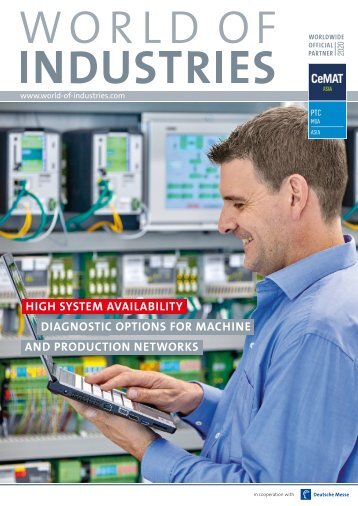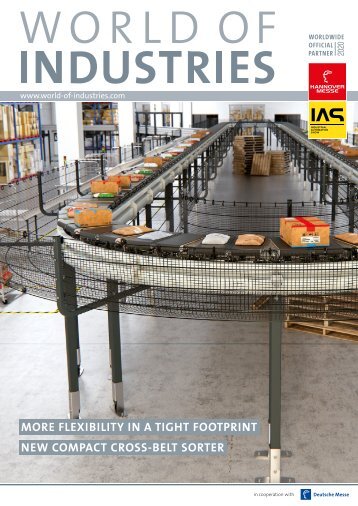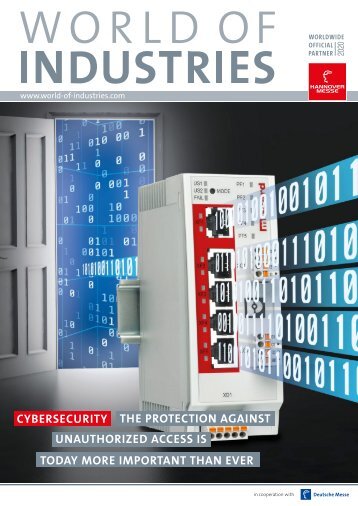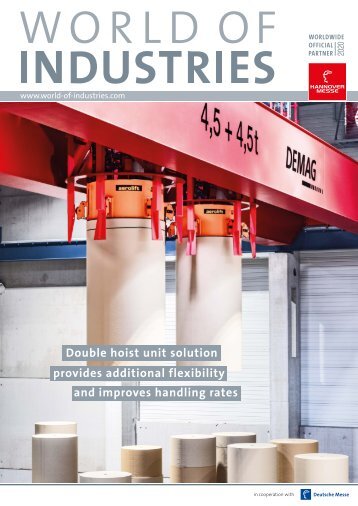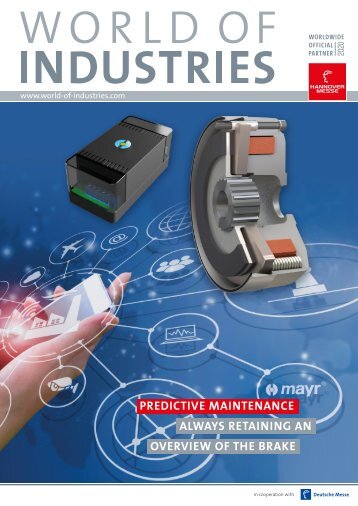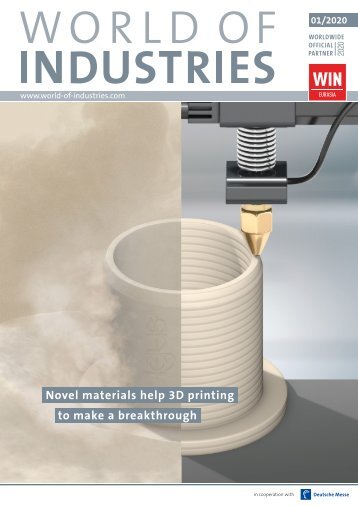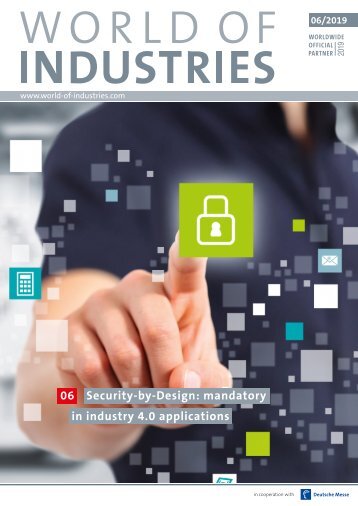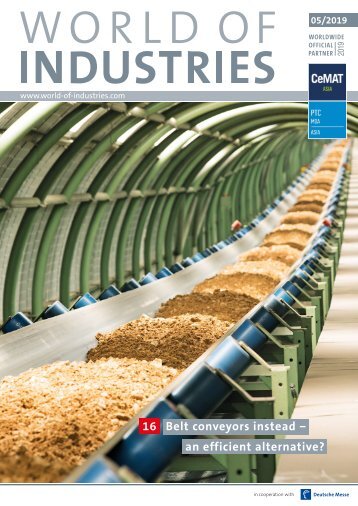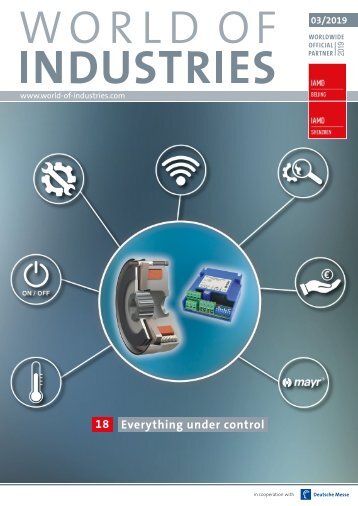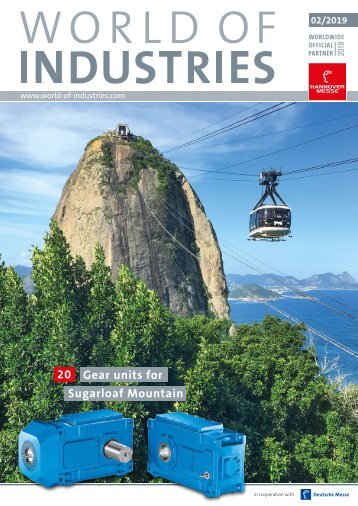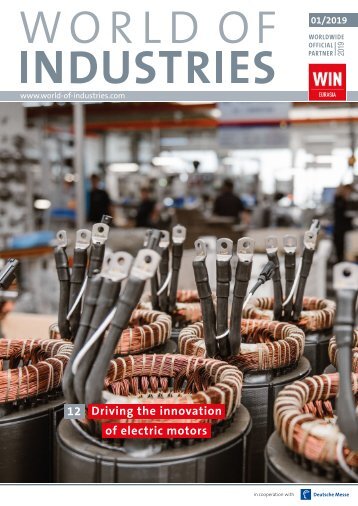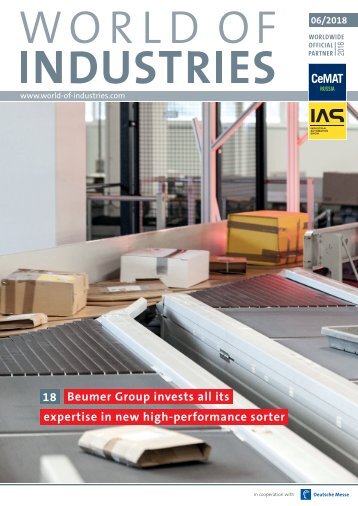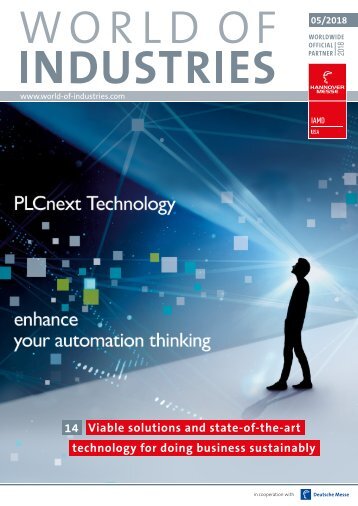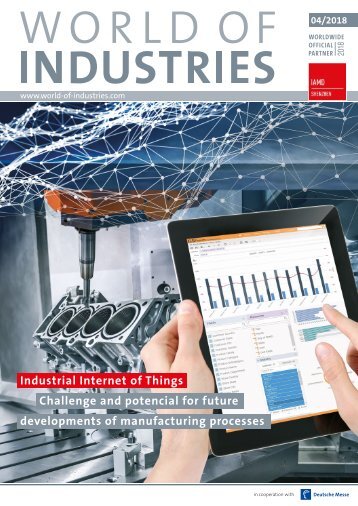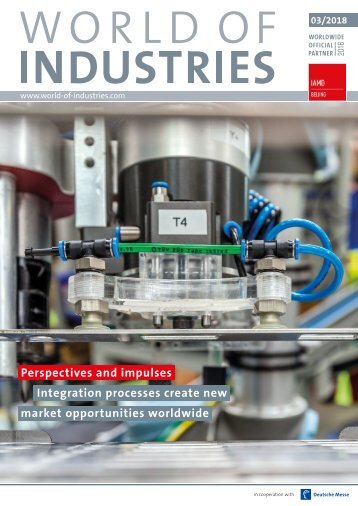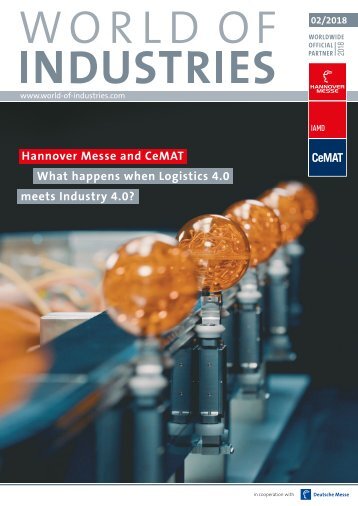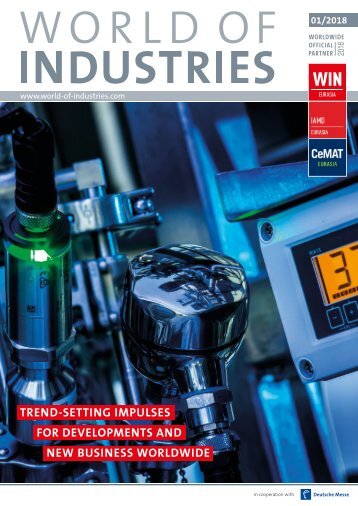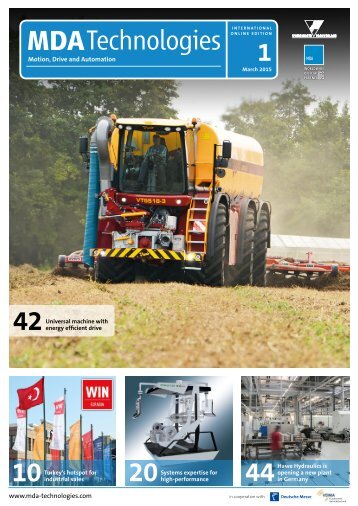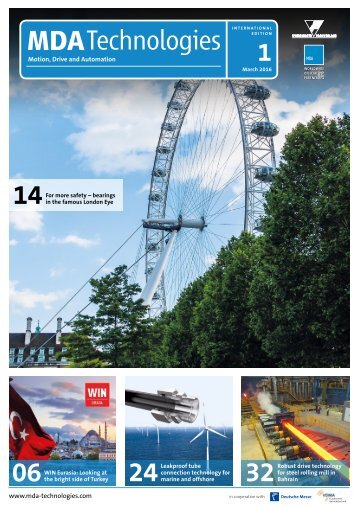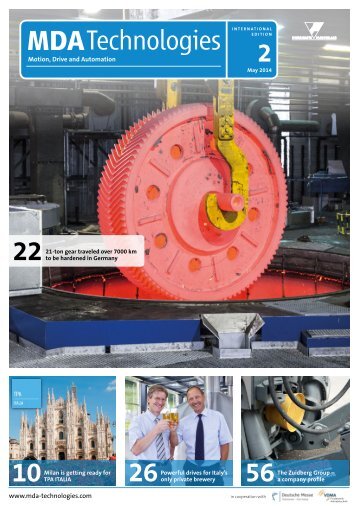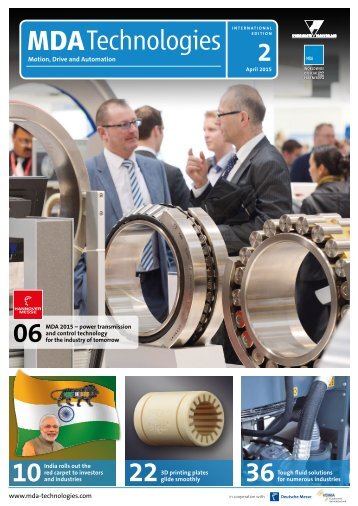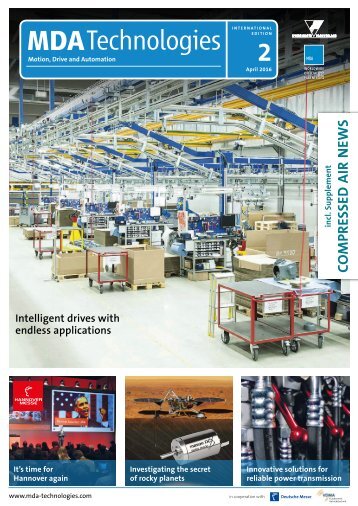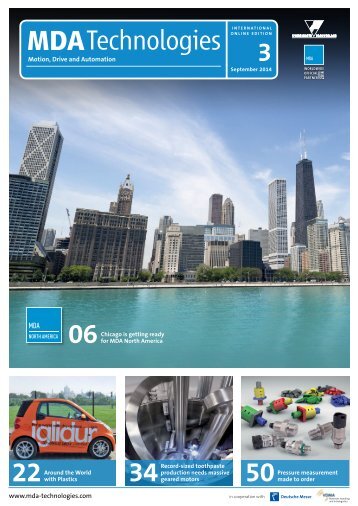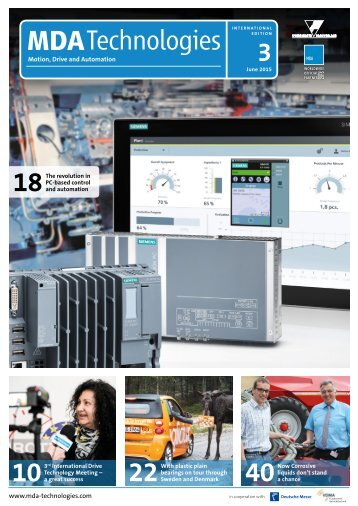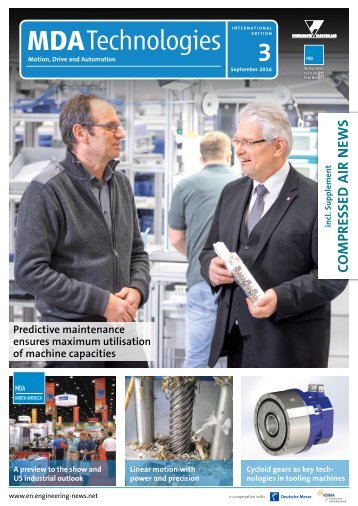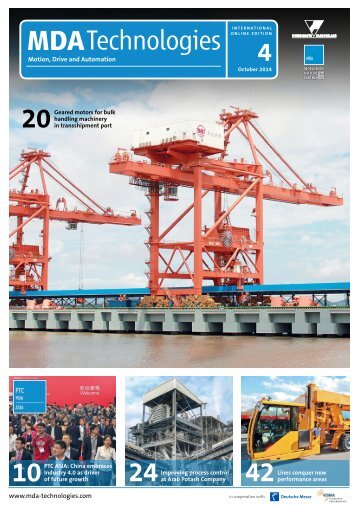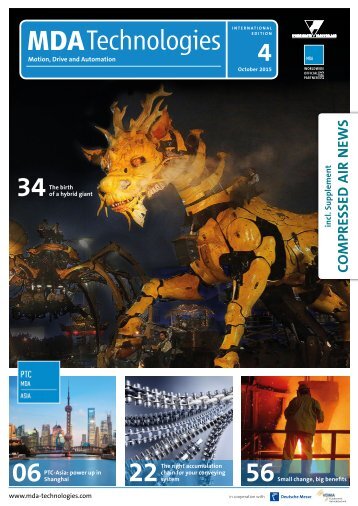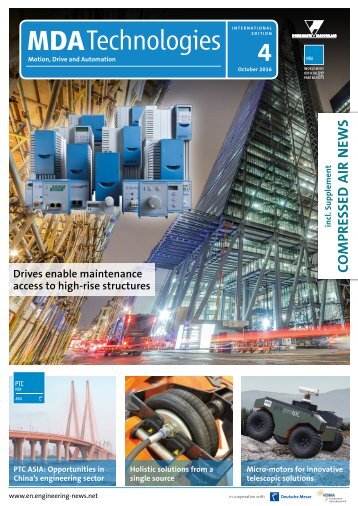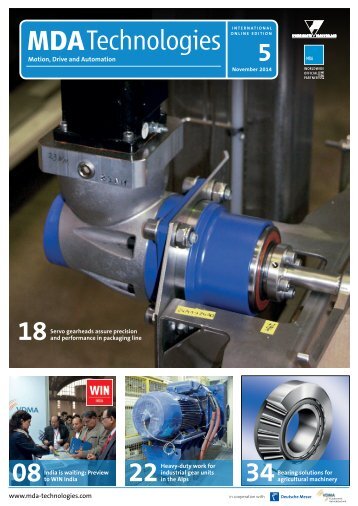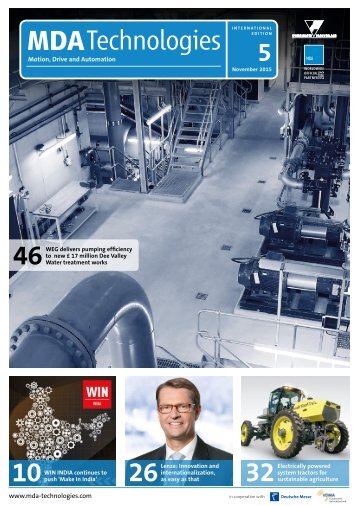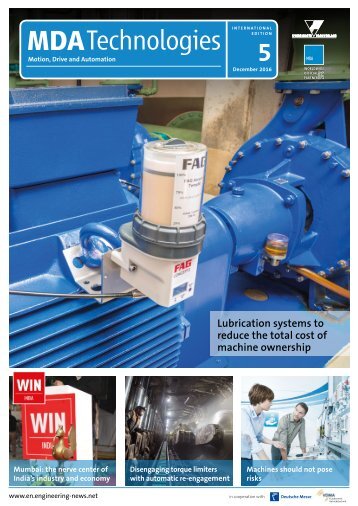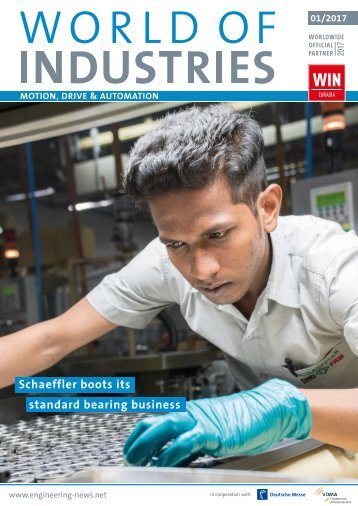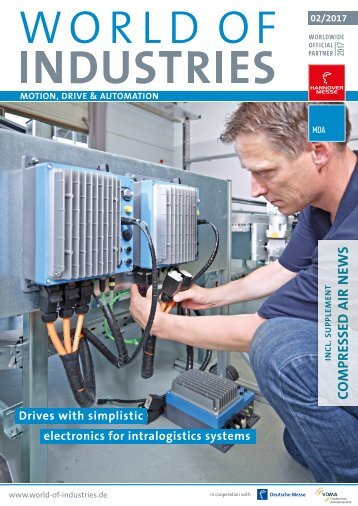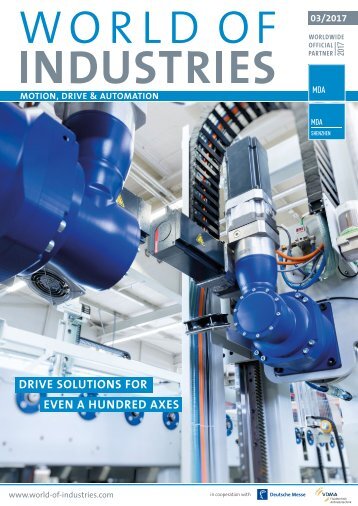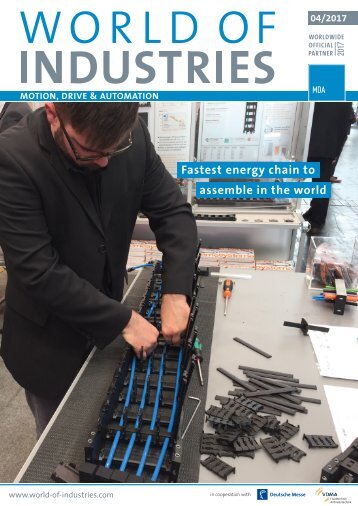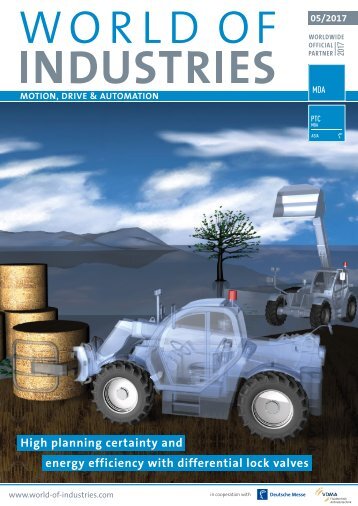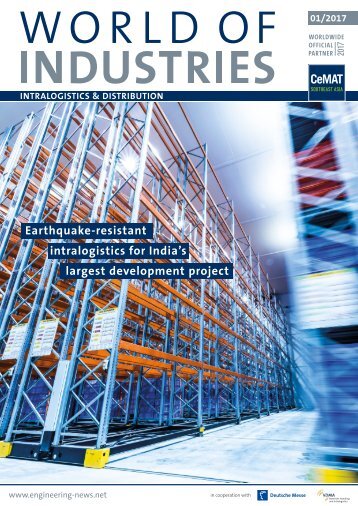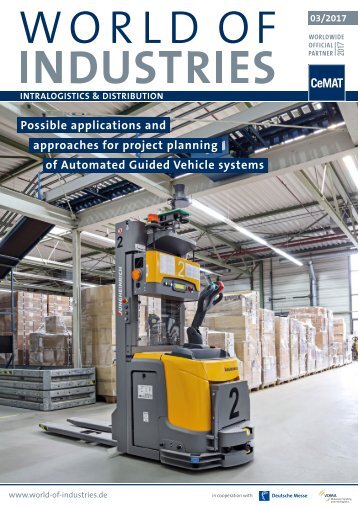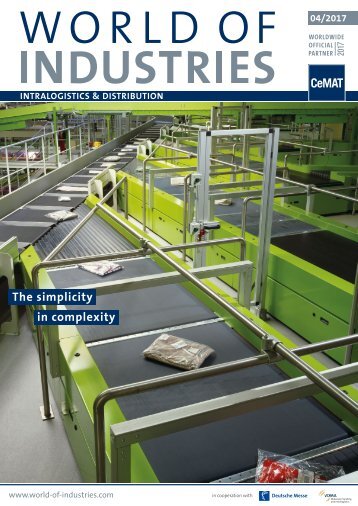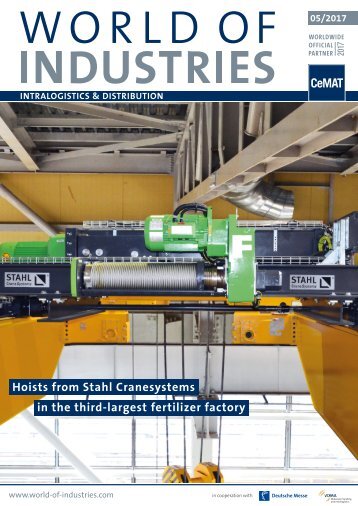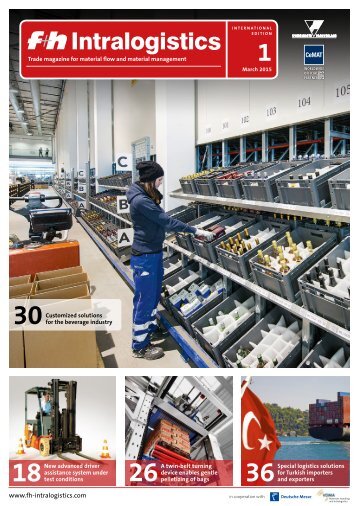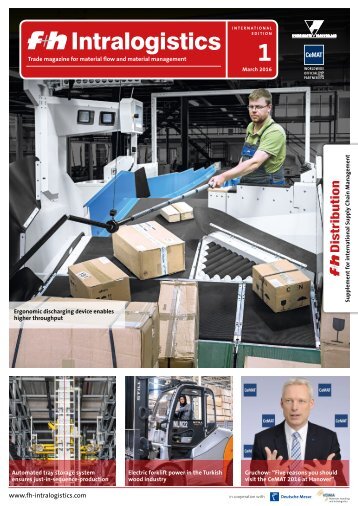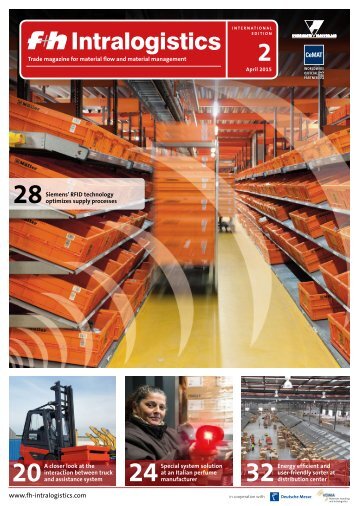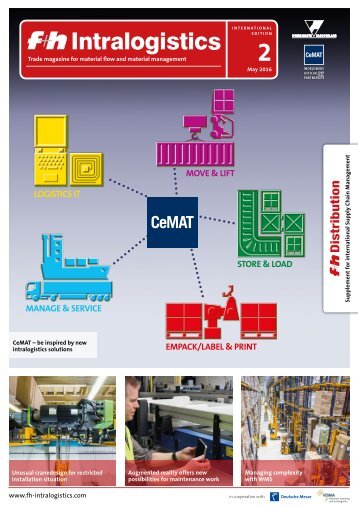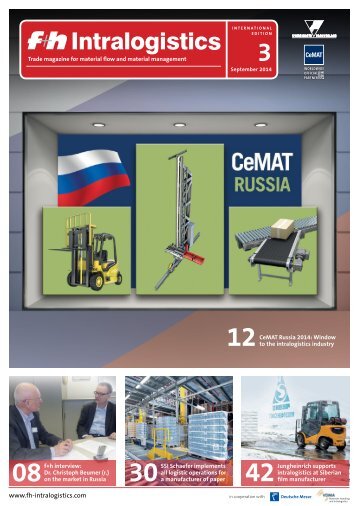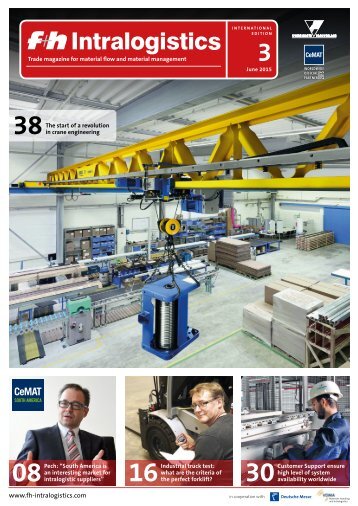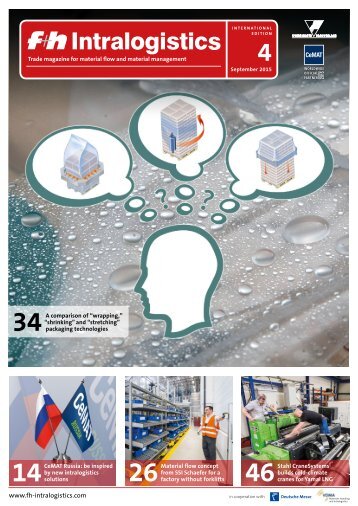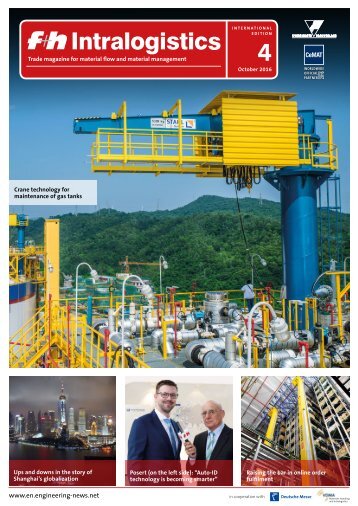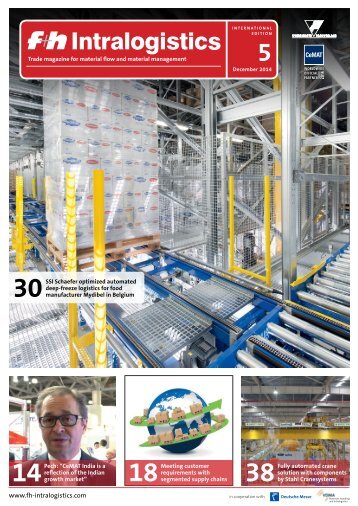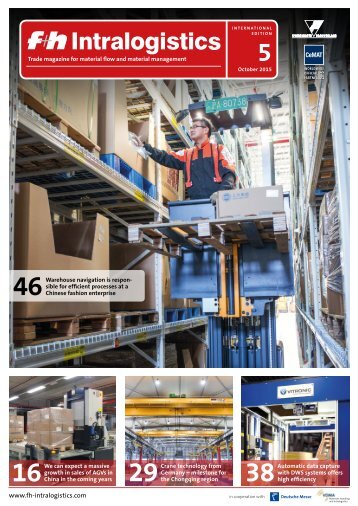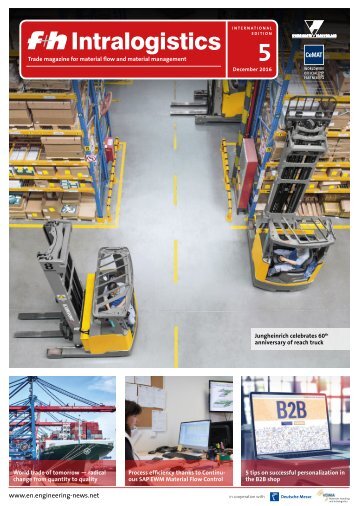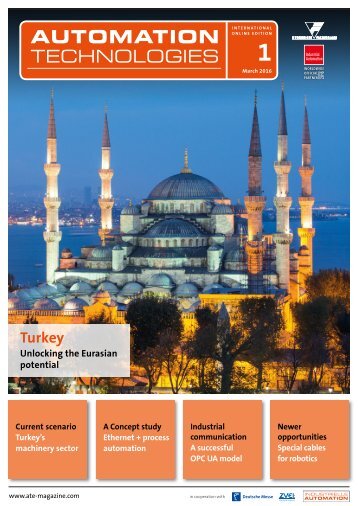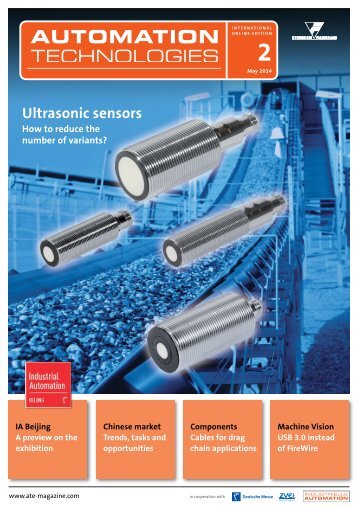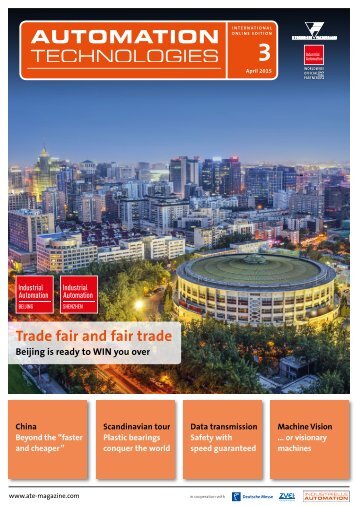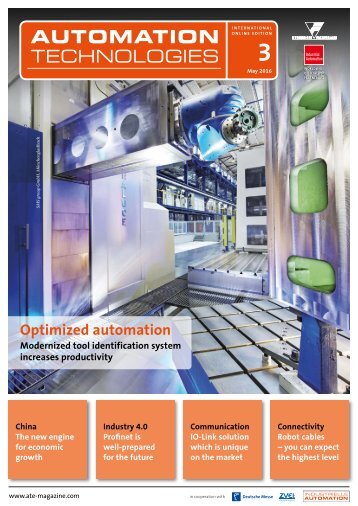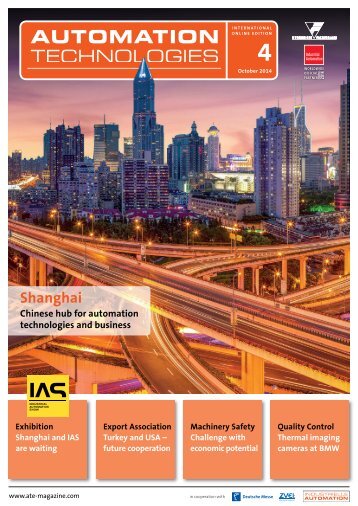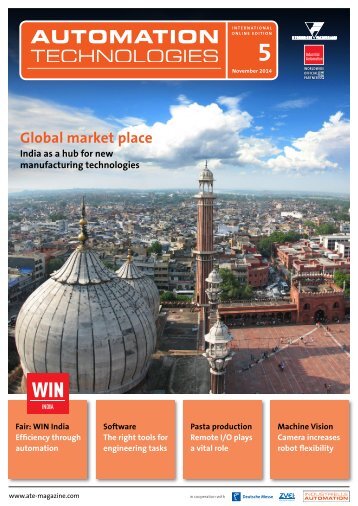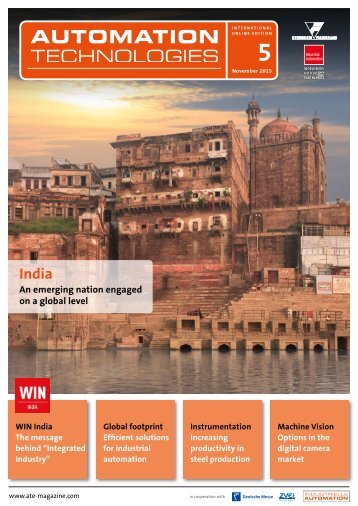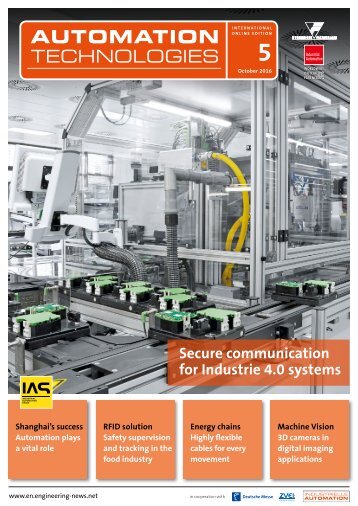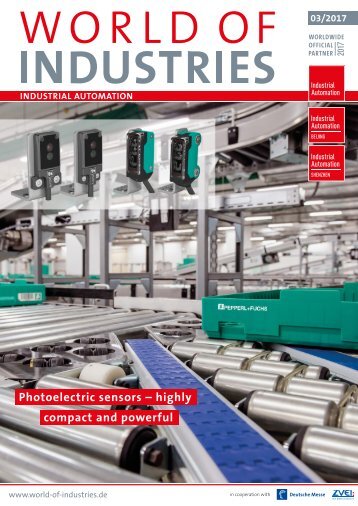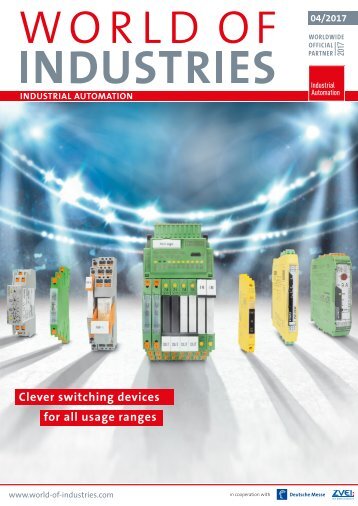WORLD OF INDUSTRIES 03/2019
- Text
- Industries
The controllers
The controllers PSSuniversal PLC can be used to implement “classic” centralised as well as distributed projects simply Long pipelines? – No problem, even offshore AUTOMATION Cable carousels can be found all over the numerous docks in the port of Rotterdam. Weighing in at several tonnes, the giants ensure that pipelines or even electrical cables can be laid on the sea bed. The Dutch company Blue Offshore uses safe automation from Pilz to ensure that safety is guaranteed, particularly for the technical staff entrusted with preparing and laying the cable. “Maximum safety with maximum availability.” That’s the primary objective for the experienced shipping and offshore experts, according to Evert-Jan van Wijk, who founded Blue Offshore in 2009. Modular, not fixed Blue Offshore offers a one-stop solution: the package not only contains the modules for the cable carousel and the individual system components for the deck equipment but also the technical staff to operate and maintain the equipment. “We also offer to replace the entire control systems on the cable carousel”, says the founder of Blue Offshore, keen to emphasise this particular service. As this is a very complex process, which above all is a strain on “safety”, Blue Offshore brought Pilz on board, and not just in the figurative sense. The modular system is complex: it includes the in-house cable carousel as well as tensioners, reel hub drives and components that are needed specifically for laying flexible pipelines, hydraulic pipelines and electrical cables. All system components are designed so that they can be transported unassembled by a normal container Author: Ewout Sikking, Pilz Netherlands ship for rapid assembly on-site. “Naturally, all the components have the necessary approvals and certificates, including Lloyds,” Evert- Jan van Wijk is keen to stress. Cable laying is never the same twice The first cable carousel from Blue Offshore went into service in 2012. Since then, no two projects have been the same: “When you lay pipelines and electrical cables on the seabed it is different each time, unique even”, says van Wijk, looking back. That’s because the geological properties of the seabed and other factors determine how large, how powerful and how fast the deck equipment must be. And the properties of the seabed are just as variable as the rest of the earth’s surface. That’s also a reason why it is important that the system components can be assembled to suit the demand, so that different customer requirements can be satisfied. So the size, performance and speed of the deck equipment vary from project to project. At the dock the necessary components are installed on the designated ship and the pipelines and/or cables are loaded. Once the ship is equipped it makes its way to sea and is docked at the site where the pipelines will be laid. All the pipelines – these may be flexible pipelines, hydraulic pipelines or electrical cables – are then routed through the cable carousel via the tensioner to the platform, distribution system or wind turbine. An electro hydraulic motor not only drives the cable carousel but also guides the pipelines or cables when winding and subsequently unwinding. Safety is ever-present In everything, the focus for Blue Offshore is on protecting the operator. Van Wijk is clear: “After all these are people at work and mistakes are going to be made. For example, when people are present in the danger zone of the cable carousel during operation”. Regular maintenance and complete overhaul of the cable carousel are standard. The first cable carousel was put into service in 2012 12 WORLD OF INDUSTRIES 3/2019
01 Blue Offshore are experts in laying cables offshore; their system includes modules for the deck equipment 02 It’s obvious: where such forces are at work, safety for operating staff must be the top priority Collaboration was based on teamwork 01 02 and was due a complete overhaul in 2017. With an unladen weight of 600 t and a 23 m diameter, plus the capacity to take up to a maximum of 5 000 t, it’s a genuine heavyweight. Maintenance included standard tasks such as exchanging wearing parts, including the hydraulic hoses, or a new coat of paint, but also a series of customer-specific improvements: expanding the capacity of the tensioner from 5 to 15 t, maintaining the hydraulics and upgrading the control system to the state of the art. Also, with a view to operator safety, it was only to be possible to control the cable carousel from the operator’s cabin. Should a problem occur in future, the deck systems are to come to an immediate “Automation system PSS 4 000 ensures cable carousels are safe.” stop and the control system is to display the fault so that it can be rectified quickly and efficiently. The aim of the upgrade was maximum safety with minimum downtime. System that fits (together) One hundred per cent reliability is essential for automation that allows human and machine to work safely and efficiently and for control systems that also cover safety. For Blue Offshore, the automation expert Pilz was the right partner: a supplier of automation solutions with safety as its core competency. “Pilz follows the same safety philosophy as we do”, says van Wijk. “Pilz is technology leader in safe automation, but that’s not all: the company is always searching for the best solution – the mindset is one of pure work ethic”, says the Blue Offshore MD. The worldwide network of subsidiaries was another convincing factor, i.e. expertise and customer proximity: “Pilz can provide support directly on-site and in the local language. Language was no barrier, and for an issue as sensitive as “safetyrelated controllers” that is highly relevant,” he says, explaining further. Right from the start of the upgrade, the docks in Rotterdam were the setting for the action: it was essential to see and understand how the deck system works, as a starting point for all considerations regarding the complete overhaul and maintenance above ground. One initial outcome was to fundamentally modify the software so as to be able to process the additional functions that would become necessary. The next step was to incorporate a suitable controller. The decision was made to use the controller PSSuniversal PLC, part of the automation system PSS 4000. For example, the intelligent controller ensures that an audible warning signal sounds 10 seconds before the carousel starts up. Or a “traffic light” uses green or red to signal whether staff may or may not access the cable carousel. The initial requirement of Pilz was to represent the deck system modules more transparently in the software; this was expanded to include a fast diagnostic solution with the necessary diagnostic functions, such as rapid feedback from the E-Stop systems for example. As a result, faults can be traced and rectified more quickly. After a phase of intensive tests the system will run in normal operation. Van Wijk is delighted: “Collaboration with Pilz was extremely successful and brings our customers genuine added value.” Photos: Pilz www.pilz.com Automation system for standardised handling The automation system PSS 4000 from Pilz enables you to build automation solutions that cover automation and safetyrelated tasks in equal measure, but are still easy for the user to operate. The central idea behind PSS 4000 is to merge safety and automation. PSS 4000 enables you to reap the benefits of a decentralised control structure, without having to accept the increased complexity that would normally result when programs are distributed on different controllers. Operation is simplified, while the level of standardisation is increased. While in traditional automation systems a single, centralised controller monitors the plant or machine and processes all the signals, PSS 4 000 allows control functions to be distributed. Process or control data, failsafe data and diagnostic information are exchanged and synchronised via Ethernet. For the control function, therefore, it makes no difference where the respective program section is processed. Instead of a centralised controller, a user program distributed in runtime is made available to the user within a centralised project. All network subscribers are configured, programmed and diagnosed via this centralised project. This enables simple, standardised handling across the whole project. WORLD OF OF INDUSTRIES 3/2019 13
- Page 1 and 2: 03/2019 www.world-of-industries.com
- Page 3 and 4: EDITORIAL Digital Developments Dear
- Page 5 and 6: W RLDWIDE NEWS Bosch Rexroth invest
- Page 7 and 8: Apart from trade wars, manufacturin
- Page 9 and 10: nover Messe’s global chain of ind
- Page 11: machine and component manufacturers
- Page 15 and 16: 01 John Browett, General Manager of
- Page 17 and 18: MSR175 data loggers record physical
- Page 19 and 20: 01 The intelligent ROBA-brake-check
- Page 21 and 22: n Acoustics: Often loud environment
- Page 23 and 24: 02 The benefits of the new electrom
- Page 25 and 26: The interview with Axel Reichert (c
- Page 27 and 28: CHANGING TIMES Automation market -
Inappropriate
Loading...
Mail this publication
Loading...
Embed
Loading...

